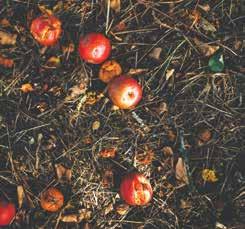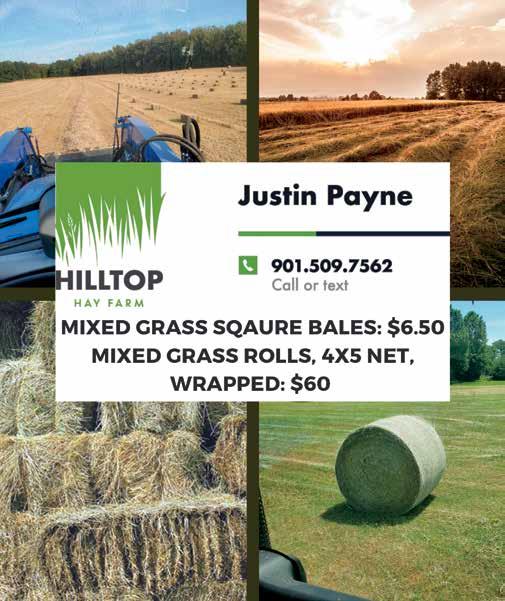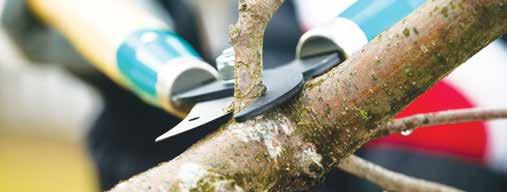
3 minute read
To Prune or not to Prune
Greener Pastures Does Compost Just Happen?
By Christopher Cooper, Shelby County Extension Agent
Advertisement
The end of the year is upon us and what a year it has been. Recently, I have had the pleasure to speak to many novice gardeners eager to learn as much as they could about gardening in the Mid-South. As we prepare to put our garden beds to rest, many of the questions from those gardeners have been about composting.
It is safe to say that the organic matter in a compost pile will soon decay. However, many factors play a part to hasten that decay, which will ultimately produce a product that will be beneficial to your garden.
The temperature of the compost pile is critical. The organisms that cause the organic matter to decay need to be warm. Their biological activity generates heat, which is high enough to kill weed seeds and disease spores in the compost pile. If possible, the compost pile needs to reach a temperature of 140 to 160 degrees Fahrenheit.
There is no need to worry if your pile does not reach those temperatures. It only means that your compost may take a little more time to decay. Different groups of fungi and bacteria will colonize the compost and continue the process of decaying at a much slower pace.
Moisture affects composting as well. Before organic materials can be broken down, those decaying organisms need water. If the materials in your compost pile are dry, add water to moisten them. You want compost materials to be damp but not soggy. Extremely wet and soggy compost piles will have an unpleasant odor. The byproducts of wet compost are harmful to plants.
The volume of your pile will decrease as decay progresses. It is vital to turn the pile to increase oxygen flow. Once the compost is ready, go ahead and use it in your garden beds or spread it as mulch. Your plants will thank you!

To Prune or Not to Prune
By Christopher Cooper, Shelby County Extension Agent
When I think of fall, images of corn stalks, mums, pumpkins and scarecrows come to mind. Nothing heralds the coming of autumn like the brilliance and splendor of fall foliage. Fall also signals the end of another growing season as plants prepare for their long winter slumber.
As cooler temperatures settle in, questions about fall pruning are on the rise. Unfortunately, fall is not an ideal time to prune. This time of year plants are going dormant and are not focused on producing new tissue. Pruning creates an injury, and plants need time to recover before going into dormancy. If you decide to prune in the fall, do so with care. Proper pruning involves making the appropriate cut at the time of year when the plant can seal the wound as quickly as possible.
The best time to prune is in either late winter or early spring. Both are periods of rapid growth for plants. This does not; however, mean that you cannot prune in the fall. Pruning in the fall is an ideal time to prune dead, dying or diseased limbs. This type of pruning can be done at any time throughout the year.
Now is the time for autumn chores such as removing spent blooms, cleaning up the vegetable garden and planting winter annuals. Pruning is a task that is best left until late winter next year. Remember, the goal of pruning is to improve the overall health and vigor of a tree or shrub. Timing is everything!












